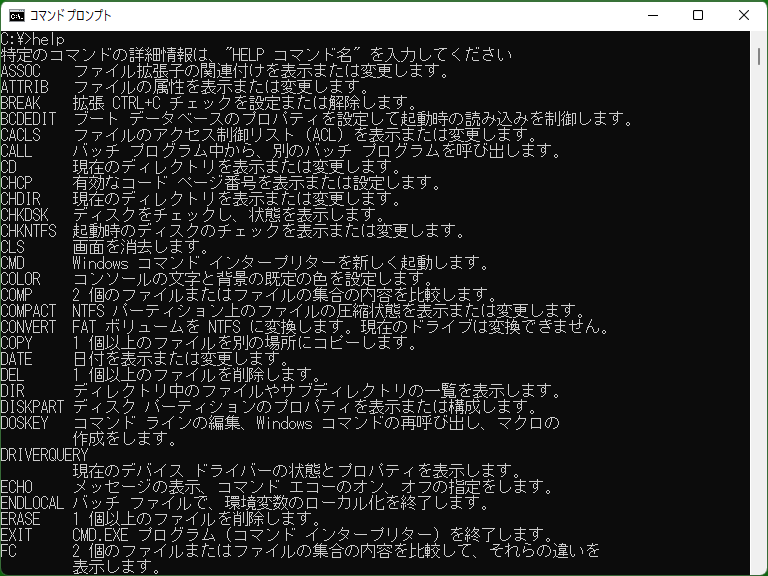Help - DOS/Command Prompt Reference
[MS-DOS, Windows NT series/XP or later] Displays help for a command.
Syntax
MS-DOS
help[.com] [/B] [/G] [/H] [/NOHI] [/NOK] [<command>]
Windows NT series
help[.exe] [<command>]
Options
| <command> |
Specifies the command name. The help for that command will be displayed. [MS-DOS] If omitted, the table of contents will be displayed. [Windows NT series] If omitted, a list of commands and their summaries will be displayed. |
| /B | [MS-DOS] Displays in monochrome. |
| /G | [MS-DOS] Optimizes screen updates for CGA (Color Graphics Adapter) to achieve maximum speed. |
| /H | [MS-DOS] Performs screen display using as many lines as possible. |
| /NOHI | [MS-DOS] Makes it usable even on monitors that do not support high-intensity. |
| /NOK | [MS-DOS] [Japanese] Disables control of the Japanese input system. |
Details

This is a command that can be used when you want to quickly check the usage of a command. The Help command differs significantly between the MS-DOS version and the Windows NT version (Command Prompt). In the MS-DOS version, it provides a text-based interface with a GUI-like appearance (mouse can also be used if programs with mouse support are integrated) to reference commands. On the other hand, the Windows NT version simply outputs the command's help in text without any graphical interface.
[Windows NT series] The help displayed by specifying the command name with ‘help <command>’ is essentially the same as executing ‘<command> /?’. While many commands support ‘/?’, there are some commands that the Help command does not support. Therefore, in some cases, it may be more suitable to execute ‘<command> /?’ instead of using the Help command.
Samples
Sample
help robocopy | more
[Windows XP or later] The help for Robocopy will be displayed on the screen. Since the output is extensive, it is configured to be displayed gradually using More.